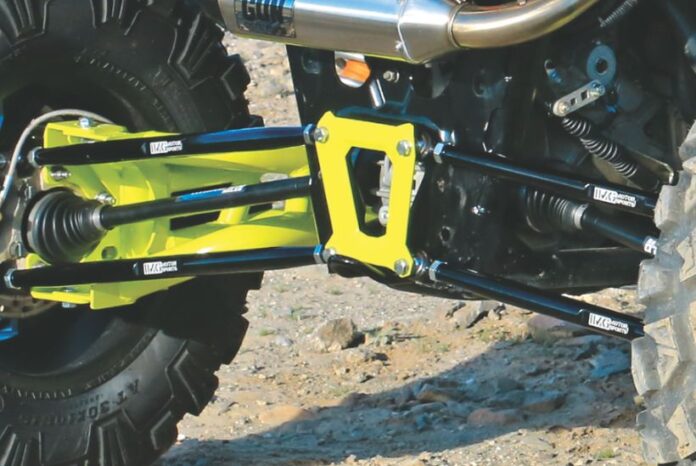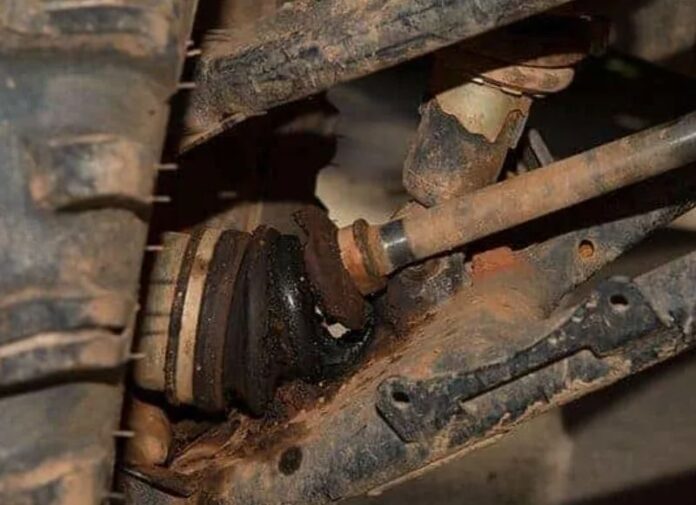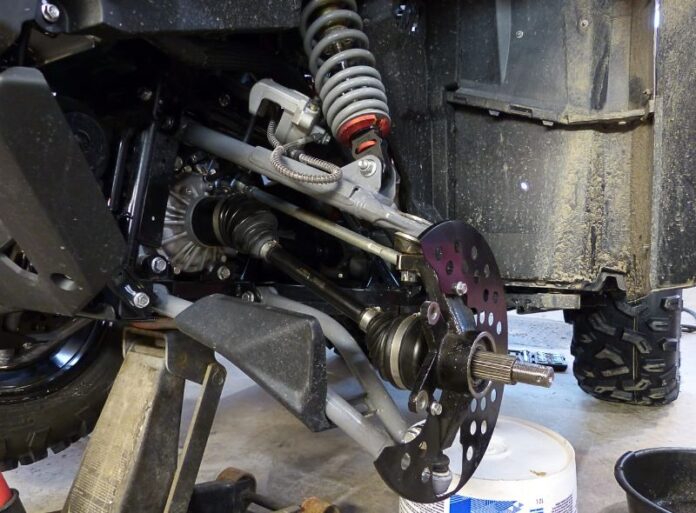If you like carving up mud trails, belting at full throttle down dunes or enjoy rock climbing on your ATV, then thank Suzuki for all the thrills.
This is the company that invented the whole quad bike sector, with its LT 125 QuadRunner appearing way back in 1983 and paving the way for all that we take for granted today.
Suzuki brought in 4-wheel drive in subsequent models, a host of chassis and suspension improvements, bigger displacement engines, and more power into the quad bike equation.
This was the precursor to bigger and faster models to come, including the first race-ready ATV, the LT250R QuadRace in 1985, soon followed by the KingQuad, renowned for its versatility and spurning the demand for UTVs later on.
This also happens to be the name for its current lineup of sport and utility quad bikes, catering to all ages and with engines from 50 to 750ccs.
Japanese brands have a huge chunk of both the ATV and UTV market. And while more reliable, and low on maintenance than other big names in the business, there are common problems that plague all brands.
ATVs are meant to be abused, both for work and play, and some parts will need replacing before others.
Why Axles Matter
Regardless if the engine in your Suzuki ATV has 50 or 750 cubic centimetres to work with, getting the power from the engine and CVT to the wheels is done with a drive axle. This has to deal with the torque required to spin the wheel, while still allowing you to turn.
Axles also have to take the weight of the quad and rider, while soaking up bumps and jumps along with the suspension and negotiating uneven terrain. No mean feat for just a single component.
In stock form, Suzuki ATV axles will last up to ten thousand miles, but any modifications, such as adding a lift kit for better ground clearance and bigger tires, change the whole geometry and add more stress.
The quad bike may be more fun to ride, but the axles can soon wear down or fail altogether. The ATV loses power, and you end up with a bent or broken axle, and an embarrassing call to a friend to help out.
To avoid instances like these, going with thicker and better-built aftermarket alternatives means less maintenance in the long run and more time for riding fun.
Aftermarket units are sold as left and right, and front and rear pairs in 4×4 Suzuki ATV models, and come ready with high-quality constant velocity or CV joints and hard-wearing CV boots.
The stronger and thicker materials mean the axles and joints cope better when riding hard, or using the KingQuad for heavy-duty tasks. And with a spare, you can change damaged axles on the spot (within half an hour at most) with basic tools and some elbow grease and continue with riding.
When to Change Your Axles
Like all vehicle parts, your Suzuki ATV axles have a shell life that is impacted by various factors. Not only do axles suffer general wear and tear when transferring torque, but they frequently are hit by large obstacles, like boulders and branches.
Shafts will survive minor impact, but the rubber boots are less so. These have a vital role in that they’re packed with grease to minimise friction and heat between the moving parts.
Ruptured or torn boots mean leaks and resulting overheating and seizing. Moreover, the danger of accumulating dirt, debris and water soon leads to mechanical damage as well as corroding metal parts from the inside.
Signs that the axles need replacing can come on gradually or suddenly. You’ll notice this through the bars with excessive vibration and noises, especially when turning or applying the throttle. This can take several forms:
- Popping and clicking sounds in turns – Worn, damaged or bent axle shafts and joints will suffer in turns and throw up popping or clicking sounds the more you turn the bars left or right.
- Clunking noises when accelerating, slowing down and during gear changes – Nosies that get louder when accelerating in first gear or reverse, and when the CVT kicks in to change gear means the axles are having a hard time getting power to the wheels.
- Humming sounds and vibrations – humming points to worn joint bearings, while vibrations are usually from contaminated joints with torn or damaged boots.
Replacing tired axles on time will save you from further damage to the ATV and high repair bills. Especially vulnerable are the transmission and drive belts, and the suspension.
What to Look for in Replacements
Stock front and rear Suzuki axles will last in short, infrequent rides on mild terrain. But if you use your ATV like most riders, then aftermarket variants make more sense. Here, there’s quite a bit of variety, axles geared for different uses, and substantial differences in prices.
Most aftermarket ATV parts makers have tiered lineups, offering general-purpose and heavy-duty axles with obvious differences in the choice of materials and overall build quality and durability.
The first is made using high-grade 5140 steel shafts, puncture-resistant neoprene boots, quality industrial bearings and durable CV joints. These are miles ahead of stock axles and still more affordable. They’re good for lower mileage, everyday speeds, and the odd run on tougher terrain.
Spend a little more, and you get quite a bit for your money. Heavy-duty axles go with tougher 4340 Chromoly steel in the shafts to better handle the heat, impact, external elements and fatigue that come with higher torque and more demanding riding.
Boots are thicker neoprene affairs, while joints have undergone heat treatment for added strength, then CNC machined for precision. Inner bearings are induction heat-treated to reduce wear and friction.
On the whole, heavy-duty axles are a performance upgrade that offers better power transfer, increased handling agility with improved joint angles and the durability needed in more spirited riding.
And they’ll last. Look for axles that have been rated against current standards, and come with limited-time or mileage warranties.
The differences in pricing among brands can put off some buyers. Established names usually charge a premium, but won’t necessarily deliver on all fronts. Some have also been known to fail early on.
Others offer superior axles without forgoing quality but cut out overheads and advertising costs to keep prices sane. All aftermarket axles for your Suzuki though should provide for a better riding experience.
Retailers and parts makers make choosing the right parts simple. All you need to know is which axle you’re replacing and your Suzuki ATV model and year. Lastly, consider how you plan on using your ATV to know whether you need a general-purpose variant, or something more robust though costing a few dollars more.












